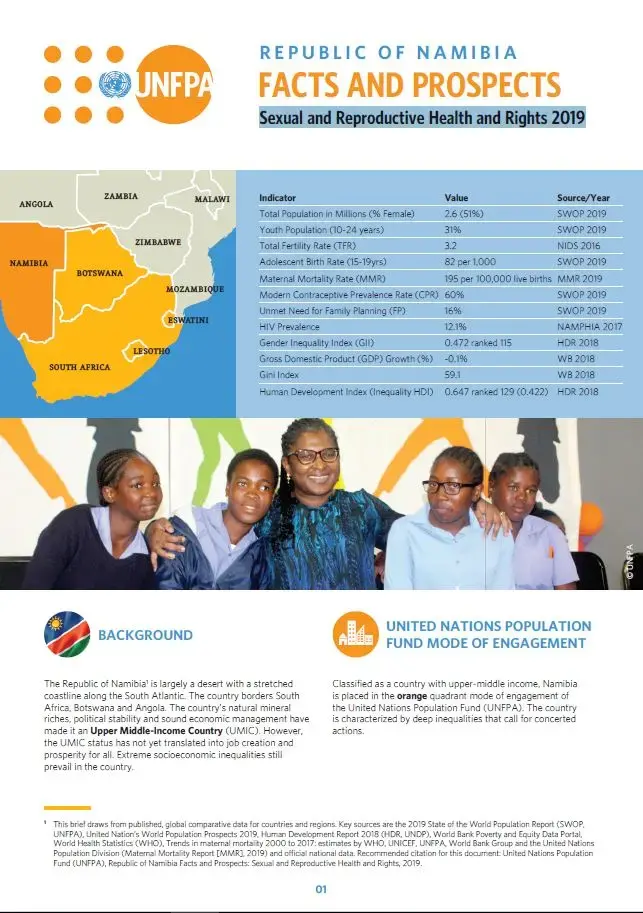Southern African Middle Income Countries’ Profiles Series
Trends of selected population and sexual and reproductive health indicators in Southern African middle income countries
The world’s middle-income countries (MICs) are a diverse group by size, population and income levels. Lower-middle-income countries (LMICs) with a gross national income (GNI) per capita ranging from $1,026 to $3,995 and upper-middle-income countries (UMICs) with a GNI per capita ranging from $3,996 to $12,375 at 2019 levels, often demonstrate the complexity of co-existing wealth, economic prospects and development inequalities.
The African continent has eight UMICs and one high-income country (HIC) – Seychelles. Southern Africa is home to half of the UMICs on the continent.
This series presents a trend analysis of selected indicators related to the International Conference on Population and Development (ICPD) Programme of Action among Southern African UMICs, including a comparison with selected UMICs and HICs from other parts of the world, with a view to identifying opportunities for improvement.
The Republic of Namibia is largely a desert with a stretched coastline along the South Atlantic. The country’s natural mineral riches, political stability and sound economic management have made it an Upper Middle-Income Country (UMIC). However, its UMIC status has not yet translated into job creation and prosperity for all. Extreme socioeconomic inequalities still prevail in the country.



